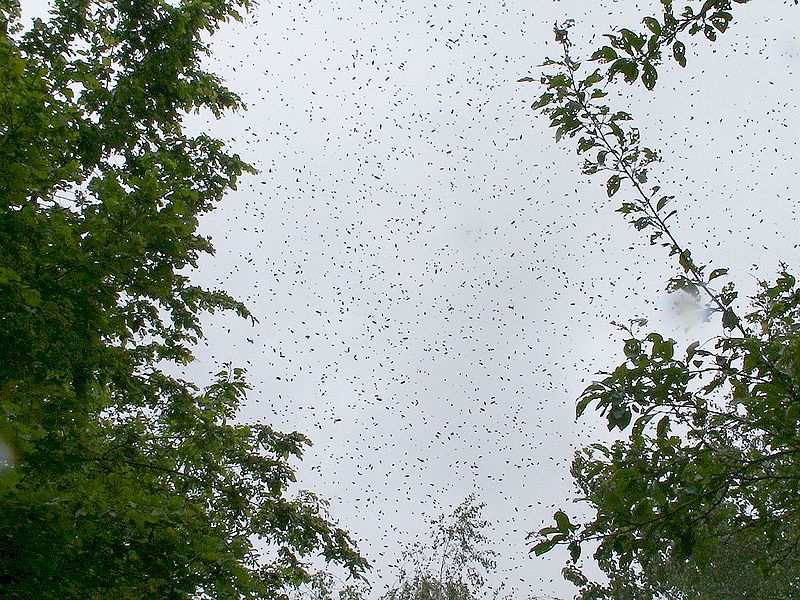Giant Bee Swarm Attacks Dozens of Buddhist Monks

This article was updated 6/26 at 5 p.m. ET.
More than 70 Buddhist monks were hospitalized in northern Thailand Saturday (June 23) after being attacked by a giant swarm of bees, according to news reports. It was unclear what provoked the bees, which were from hives kept at the monks' temple and had never posed a threat previously.
Bees from several of the hives attacked the monks while they were sweeping the grounds of the Luang Worawihan temple in Chiang Mai province. Of the 76 monks who had to be rushed to the hospital with stings, 19 were in serious condition and six were in a coma, according to the Deccan Herald.
Temples often keep beehives, as the wax is useful for making candles.
Bees typically swarm in the late spring and early summer, when their numbers have grown to the point that half of them must break away from their hive and form a new colony elsewhere. The behavior is controlled by pheromones, or chemical signals, given off by the colony's queen.
Attacks are also escalated by pheromones. When a bee stings, it not only injects toxins into the victim, it also releases alarm pheromones. When these chemical signals are given off near a hive or swarm, they can trigger other bees to come to their colony mate's defense, often attacking until the victim flees or is killed. [Amazing Video: 30 Japanese Hornets Kill 30,000 Honey Bees]
When one person comes to another victim's aid, the bees will sometimes turn on the newcomer, according to the U.S. Department of Agriculture. In this way, bee attacks can escalate and spread.
Sign up for the Live Science daily newsletter now
Get the world’s most fascinating discoveries delivered straight to your inbox.
According to Thomas Seeley, an apiologist at Cornell University who studies swarm intelligence, the species involved in the attack was most likely the giant honey bee, Apis dorsata, which is common in Thailand. "It has been described as the most ferocious stinging insect on earth, but it attacks only when disturbed. In Thailand, I've seen these bees fly down and attack boys who had thrown rocks at their nests. Perhaps something like this provoked the bees to attack," Seeley told Life's Little Mysteries.
Eric Mussen, an entomologist at the University of California, Davis, guesses the monks might not have been familiar with honey bee behavior, and may have swatted at or blown at the first bees that acted protective. "That would have led to the release of extra alarm pheromone, and from then on it was all down hill," he wrote in an email.
It is higly irregular for a colony of European honey bees — the prevailing species in the U.S. — to send out more than 200 stinging bees in response to the release of alarm pheromones. However, "Our Africanized honey bees in south and central America have stung individuals more than 2,000 times. That many stings are lethal," Mussen wrote.
Multiple bee stings can induce nausea, rashes and difficulty breathing. Large doses of the venom cause a sharp drop in blood pressure and can be fatal in humans, the scientists said.
Follow Natalie Wolchover on Twitter @nattyover. Follow Life's Little Mysteries on Twitter @llmysteries. We're also on Facebook & Google+.
Natalie Wolchover was a staff writer for Live Science from 2010 to 2012 and is currently a senior physics writer and editor for Quanta Magazine. She holds a bachelor's degree in physics from Tufts University and has studied physics at the University of California, Berkeley. Along with the staff of Quanta, Wolchover won the 2022 Pulitzer Prize for explanatory writing for her work on the building of the James Webb Space Telescope. Her work has also appeared in the The Best American Science and Nature Writing and The Best Writing on Mathematics, Nature, The New Yorker and Popular Science. She was the 2016 winner of the Evert Clark/Seth Payne Award, an annual prize for young science journalists, as well as the winner of the 2017 Science Communication Award for the American Institute of Physics.










